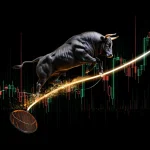
Cognitive Bias in Investing: Understand and Thrive
Nov 26, 2024
Investing is not just about numbers and data; it’s a profoundly psychological endeavour. Cognitive biases—systematic patterns of deviation from norm or rationality in judgment—significantly influence investment decisions. Understanding these biases is crucial for making better investment choices and thriving in the financial markets. This essay explores cognitive biases, provides examples, illustrates how these biases lead to poor market outcomes, and discusses how investors can overcome them to succeed. Additionally, it delves into the role of mass psychology in investing and how it can be harnessed to make more informed decisions.
Understanding Cognitive Bias in Investing
Cognitive biases are mental shortcuts or heuristics the brain uses to simplify decision-making. While these shortcuts can be helpful in everyday life, they often lead to errors in judgment, especially in complex fields like investing. Some common cognitive biases that affect investors include confirmation bias, overconfidence bias, loss aversion, and herd behaviour.
1. Confirmation Bias: This is the tendency to search for, interpret, and remember information that confirms one’s preexisting beliefs. For example, an investor who believes a particular stock will rise might only pay attention to positive news about that company while ignoring negative information.
2. Overconfidence Bias: Investors often overestimate their knowledge and predictive abilities. This can lead to excessive risks, as they believe they have superior insights.
3. Loss Aversion: Daniel Kahneman and Amos Tversky proposed this bias, which suggests that people feel the pain of losses more acutely than the pleasure of gains. As a result, investors might hold onto losing stocks for too long, hoping to avoid realizing a loss.
4. Herd Behavior: This is the tendency to follow the actions of a larger group, often leading to irrational market bubbles or crashes. Investors might buy into a stock simply because everyone else is doing so rather than based on sound analysis.
Historical Perspectives on Cognitive Bias
Understanding cognitive biases is not a modern phenomenon. Philosophers and economists from centuries past have discussed similar ideas in their work.
1. Michel de Montaigne (1533-1592): The French Renaissance philosopher wrote extensively about human nature and the tendency for people’s beliefs to cloud their judgment. He observed that “the greatest part of our happiness or misery depends upon our dispositions, not our circumstances.” This aligns with the modern understanding of cognitive biases, where individual dispositions significantly affect investment decisions.
2. Voltaire (1694-1778): Voltaire’s scepticism and advocacy for a reason over superstition can be seen as an early critique of cognitive biases. He famously said, “Doubt is not pleasant, but certainty is absurd.” This underscores the danger of overconfidence bias in investing, where certainty in one’s predictions can lead to significant losses.
3. Sir John Templeton (1912-2008): A more contemporary figure, Templeton emphasized the importance of contrarian thinking in investing. He observed that “the time of maximum pessimism is the best time to buy, and the time of maximum optimism is the best time to sell.” This advice directly counters herd behaviour, encouraging investors to think independently.
The Consequences of Cognitive Bias in Investing
Cognitive biases can lead to poor investment outcomes, as they cause deviations from rational decision-making. Here are some examples:
1. Dot-com Bubble (1995-2000): Herd behaviour and overconfidence led to the inflation of technology stocks beyond their intrinsic value. Investors poured money into tech companies with little to no earnings, believing the internet would revolutionize everything. When the bubble burst, many lost their life savings.
2. 2008 Financial Crisis: Confirmation bias played a role in the housing market collapse. Investors and financial institutions ignored warning signs and continued to believe in the perpetual rise of housing prices. This led to the creation of risky mortgage-backed securities, ultimately resulting in a global financial meltdown.
Overcoming Cognitive Bias
To succeed in investing, one must recognize and mitigate cognitive biases. Here are some strategies:
1. Education and Awareness: Understanding the nature of cognitive biases is the first step in overcoming them. Investors should educate themselves about common biases and how they affect decision-making.
2. Diversification: By spreading investments across various asset classes, sectors, and geographies, investors can reduce the impact of any single bias. Diversification helps manage risk and avoid overconfidence in a particular investment.
3. Discipline and Rules: Establishing a disciplined investment approach with predefined rules can help counteract emotional decision-making. For example, setting stop-loss orders can prevent loss aversion from causing prolonged holding of losing stocks.
4. Seeking Contrary Opinions: Actively seeking information that challenges one’s views can help mitigate confirmation bias. This can involve discussing investments with a diverse group or reading analyses presenting opposing viewpoints.
The Role of Mass Psychology
Mass psychology, the collective emotional behaviour of investors, plays a significant role in market movements. Understanding mass psychology can provide valuable insights into market trends and help investors make more informed decisions.
1. Contrarian Investing: Sir John Templeton advised that going against the crowd can lead to substantial gains. When the masses are overly pessimistic, it might be an excellent time to buy; when they are overly optimistic, it might be a good time to sell.
2. Sentiment Analysis: Tools that measure market sentiment, such as the Fear & Greed Index, can help investors gauge the market’s overall mood. Investors can make more strategic decisions by understanding whether fear or greed dominates.
3. Behavioral Finance: This field combines psychology and economics to study how cognitive biases and emotions affect financial decisions. Investors who understand behavioural finance can better anticipate market movements driven by mass psychology.
The Impact of Algorithmic Trading on Cognitive Bias
Algorithmic trading, which uses computer algorithms to execute trades at high speeds, has transformed financial markets. While algorithms can minimize human error and cognitive biases, they are not immune to the biases of their creators. For instance, if an algorithm is programmed based on flawed assumptions or biased historical data, it can perpetuate those biases in trading decisions. This algorithmic bias phenomenon leads to glitches, errors, and flash crashes in financial markets.
One example of algorithmic bias is optimization bias, which occurs when an algorithm is designed to optimize for a specific goal without considering the broader context. This can be minimized by keeping the number of parameters to a minimum and increasing the diversity of the training data.
Another concern is the cultural divide between employees of firms primarily engaged in algorithmic trading and traditional investment managers. Algorithmic trading has encouraged an increased focus on data and decreased emphasis on sell-side research.
Despite these challenges, algorithmic trading offers several benefits. It can analyze and process vast amounts of data in real time, helping traders identify opportunities and make informed decisions. Additionally, it can help eliminate emotional biases that influence human decision-making, potentially leading to more objective and consistent trading strategies.
To mitigate the risks of algorithmic bias, experts recommend developing bias impact statements, inclusive design principles, and cross-functional work teams. Combining experts from various departments, disciplines, and sectors can help facilitate accountability standards and strategies for addressing online biases.
Furthermore, traders must remain disciplined and focused on objective market trends and data analysis to avoid falling prey to cognitive biases. This involves regularly reviewing performance metrics, setting realistic goals based on past successes and failures, and remaining open-minded about new information that could impact their trades.
Winning in the Markets by Avoiding Cognitive Biases
By recognizing and mitigating cognitive biases and leveraging mass psychology, investors can significantly improve their chances of success. Here are some examples:
1. Warren Buffett: Buffett’s investment philosophy is rooted in rational decision-making and understanding market psychology. He famously said, “Be fearful when others are greedy and greedy when others are fearful.” By avoiding herd behaviour and overconfidence, Buffett has achieved remarkable success.
2. Howard Marks: The co-founder of Oaktree Capital Management, emphasizes the importance of contrarian thinking and understanding market cycles. His memos often highlight the dangers of cognitive biases and the value of independent thinking.
3. Ray Dalio: The founder of Bridgewater Associates uses a systematic approach to decision-making, incorporating principles from behavioural finance. Dalio‘s emphasis on diversification and risk management has helped his firm navigate various market conditions.
Conclusion
Cognitive biases are an inherent part of human nature, but they can have detrimental effects on investment decisions. By understanding these biases and employing strategies to mitigate them, investors can make more rational and informed choices. Additionally, leveraging mass psychology can provide valuable insights into market trends and help investors capitalize on opportunities.
The wisdom of historical and contemporary thinkers like Montaigne, Voltaire, Templeton, and Lynch underscores the importance of rationality, independent thinking, and emotional discipline in investing. By recognizing the influence of cognitive biases and harnessing the power of mass psychology, investors can thrive in the complex and often volatile world of financial markets.












